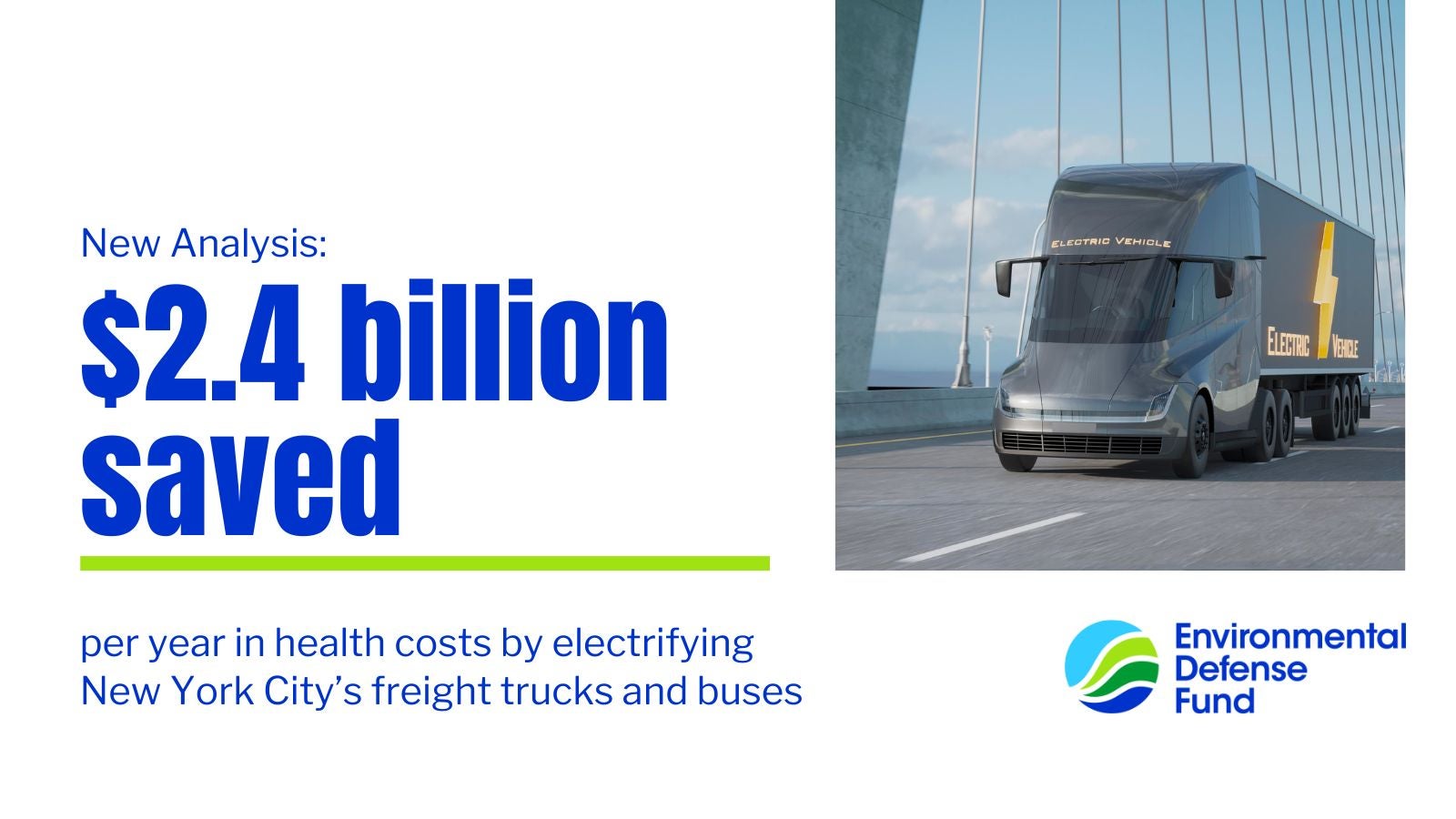
Diesel-powered trucks, buses and other heavy-duty vehicles—also known as medium- and heavy-duty vehicles (MHDVs)—are some of the biggest emitters of health harming pollution on U.S. roads. That’s why many states are taking action to electrify their heavy-duty fleets over the next decade. A new study published in Environmental Research: Health tallies up the benefits of such a conversion for New York City, finding it would save $2.4 billion in health costs, prevent hundreds of deaths and more.
The study, coauthored by researchers at the University of North Carolina at Chapel Hill, Boston University and Environmental Defense Fund (EDF), underscores the importance of state-level actions, such as the Advanced Clean Truck (ACT) rule, to cut climate pollution and improve health. Amid industry pushback and the Trump administration’s efforts to halt the electric vehicle transition and undermine clean air standards, New York must lead by implementing the ACT rule this year.
Electrification would bring real annual benefits, especially for most affected communities
The study estimated that full electrification of MHDVs in NYC by 2040 would:
- Save $2.4 billion in health costs
- Prevent 248 deaths
- Prevent 173 childhood asthma emergency department visits
- Avoid 205 new pediatric asthma cases
- Prevent over 52,000 pediatric asthma exacerbations
“This study demonstrates how electrifying New York City’s trucks and buses could improve public health, clean air and address climate emissions, especially in communities that have historically borne the heaviest burden of air pollution,” said Ananya Roy, EDF Senior Health Scientist and a co-author.
The study found that communities currently hardest hit by freight truck pollution, including predominantly black, Hispanic and/or low-wealth neighborhoods, such as the South Bronx, would benefit greatly from the transition. Four in ten census tracts with the worst air pollution would see their total traffic related air pollution (NO2) fall by at least 30%.
“The South Bronx is an epicenter of environmental injustice, primarily rooted in operations and infrastructure that see many thousands of MHDVs jam our streets and slice through our communities,” said Arif Ullah, Executive Director of South Bronx Unite, a community health organization. This has resulted in an asthma crisis and a range of other poor health outcomes, diminishing our quality of life and rippling across generations.”
“We have long known that the historic discriminatory siting of pollution-causing infrastructure, including highways, warehouses and bus depots, medium- and heavy-duty vehicles are disproportionately concentrated in low-income, communities of color, added Eddie Bautista, Executive Director of the New York City Environmental Justice Alliance. “This analysis exemplifies what we can expect to see when we accomplish our goals to electrify the transportation sector as we work to meet our climate mandates.”
How MHDVs contribute to New York’s pollution
At least 1 million MHDVs are on roads across New York state, travelling a collective 17 billion miles annually in 2020. In New York City, traffic is a major source of health harming air pollution, accounting for 14% of PM2.5 and 28% of NOx emissions. Heavy-duty diesel vehicles make up just 6% of the vehicle activity in the city but contribute more than half of tailpipe PM2.5 and NOx emissions. They are also responsible for about a quarter of all on-road vehicle climate emissions in the state.
New York’s Advanced Clean Trucks (ACT) rule could help
New York State adopted the ACT rule in 2021, which requires truck and bus manufacturers to gradually produce and sell an increasing percentage of zero-emission MHDVs starting this year. But state legislators are currently weighing whether to pause implementation. Such a delay would disrupt the adoption timeline and postpone essential health benefits found in this research. New York must stand firm and proceed with implementation this year.









